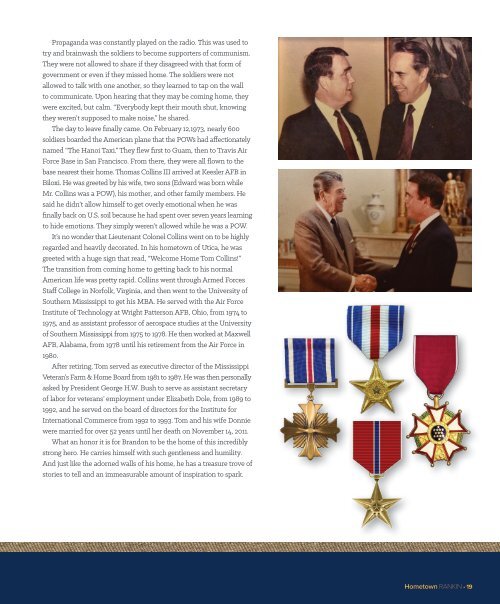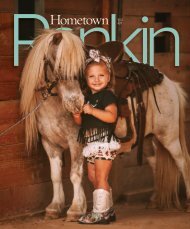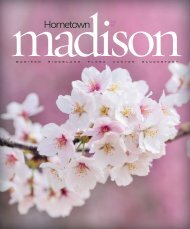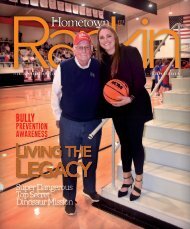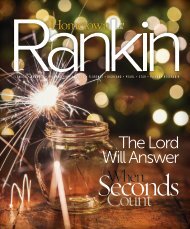Rankin1123web
You also want an ePaper? Increase the reach of your titles
YUMPU automatically turns print PDFs into web optimized ePapers that Google loves.
Propaganda was constantly played on the radio. This was used to<br />
try and brainwash the soldiers to become supporters of communism.<br />
They were not allowed to share if they disagreed with that form of<br />
government or even if they missed home. The soldiers were not<br />
allowed to talk with one another, so they learned to tap on the wall<br />
to communicate. Upon hearing that they may be coming home, they<br />
were excited, but calm. “Everybody kept their mouth shut, knowing<br />
they weren’t supposed to make noise,” he shared.<br />
The day to leave finally came. On February 12,1973, nearly 600<br />
soldiers boarded the American plane that the POWs had affectionately<br />
named “The Hanoi Taxi.” They flew first to Guam, then to Travis Air<br />
Force Base in San Francisco. From there, they were all flown to the<br />
base nearest their home. Thomas Collins III arrived at Keesler AFB in<br />
Biloxi. He was greeted by his wife, two sons (Edward was born while<br />
Mr. Collins was a POW), his mother, and other family members. He<br />
said he didn’t allow himself to get overly emotional when he was<br />
finally back on U.S. soil because he had spent over seven years learning<br />
to hide emotions. They simply weren’t allowed while he was a POW.<br />
It’s no wonder that Lieutenant Colonel Collins went on to be highly<br />
regarded and heavily decorated. In his hometown of Utica, he was<br />
greeted with a huge sign that read, “Welcome Home Tom Collins!”<br />
The transition from coming home to getting back to his normal<br />
American life was pretty rapid. Collins went through Armed Forces<br />
Staff College in Norfolk, Virginia, and then went to the University of<br />
Southern Mississippi to get his MBA. He served with the Air Force<br />
Institute of Technology at Wright Patterson AFB, Ohio, from 1974 to<br />
1975, and as assistant professor of aerospace studies at the University<br />
of Southern Mississippi from 1975 to 1978. He then worked at Maxwell<br />
AFB, Alabama, from 1978 until his retirement from the Air Force in<br />
1980.<br />
After retiring, Tom served as executive director of the Mississippi<br />
Veteran’s Farm & Home Board from 1981 to 1987. He was then personally<br />
asked by President George H.W. Bush to serve as assistant secretary<br />
of labor for veterans’ employment under Elizabeth Dole, from 1989 to<br />
1992, and he served on the board of directors for the Institute for<br />
International Commerce from 1992 to 1993. Tom and his wife Donnie<br />
were married for over 52 years until her death on November 14, 2011.<br />
What an honor it is for Brandon to be the home of this incredibly<br />
strong hero. He carries himself with such gentleness and humility.<br />
And just like the adorned walls of his home, he has a treasure trove of<br />
stories to tell and an immeasurable amount of inspiration to spark.<br />
Hometown RANKIN • 19


